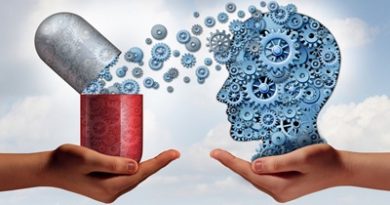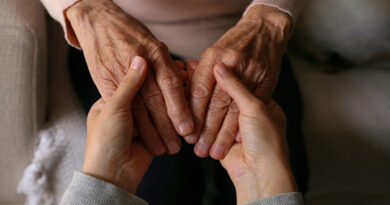The Impact of Seasonal Affective Disorder on Mental Health
Do the shorter days of winter and fall make you feel ‘blue’? It’s normal to have some days when you feel ‘blue’, but if you feel ‘blue’ for days at a time and you can’t get motivated to do activities you normally enjoy, you may be suffering from seasonal affective disorder (SAD), a type of depression.
In most cases, SAD begins in young adulthood with symptoms starting in the late fall or early winter and going away during the spring. Both serotonin and melatonin help maintain the body’s daily rhythm that is tied to the seasonal night-day cycle. In people with SAD, changes in serotonin and melatonin levels disrupt the normal daily rhythms. As a result, they can no longer adjust to the seasonal changes in day length, leading to sleep, mood, and behavior changes.
Deficits in vitamin D may also exacerbate these problems because vitamin D is believed to promote serotonin activity. In addition to vitamin D consumed with diet, the body produces vitamin D when exposed to sunlight on the skin. With less daylight in the winter, people with SAD may have lower vitamin D levels, which may further hinder serotonin activity.
READ: Spiritual Wellness: How to Go Big
Seasonal affective disorder is experienced in the form of symptoms such as:
- Depression: Feeling depressed most of the day, nearly every day.
- Emotional: Feeling miserable, guilty, worthless, or hopeless. Having frequent thoughts of death or suicide.
- Apathy: Losing interest in activities you once enjoyed.
- Anxiety: Feeling tense, agitated, irritated, or unable to tolerate stress.
- Energy level: Feeling lethargic and sluggish or jittery and unable to relax.
- Sleep patterns: Oversleeping or inability to fall asleep. Difficulty staying asleep or waking up too early.
- Weight changes: Loss of appetite, over eating and cravings for carbohydrates (resulting in weight gain).
- Concentration: Wavering attention, difficulty focusing or staying focused. Easily distracted.
- Social withdrawal or isolation (feeling like “hibernating”).
- School or work problems.
- Increase in substance use or misuse.
If you think you may be suffering from SAD, talk to your health care provider or a mental health specialist about your concerns. There are multiple options available for treatment and a myriad of strategies to choose from to help manage symptoms.
–By Michaela Butterworth, Health Promotion Specialist
If you or someone you know is experiencing a mental health emergency, it is important to visit Valeo’s Crisis Center located at 400 SW Oakley Avenue. Valeo’s Crisis Center never closes, it is a walk-in emergency clinic, with no appointment necessary. Valeo’s 24-Hour Crisis Line is 785-234-3300
Valeo Behavioral Health Care
785-233-1730
Crisis Services
400 SW Oakley
Topeka, KS 66606
24 Hour Crisis Line
785-234-3300
National Suicide Prevention Life Line
1-800-273-8255
Shawnee County Suicide Prevention Coalition
Family Service and Guidance Center (18 and under)
325 SW Frazier
Topeka, KS 66606
24 Hour Crisis Number
785-232-5005
Healing after Loss to Suicide Group (HeALS)
Sandy Reams – Group Facilitator
Topeka.Heals@gmail.com
785-249-3792




